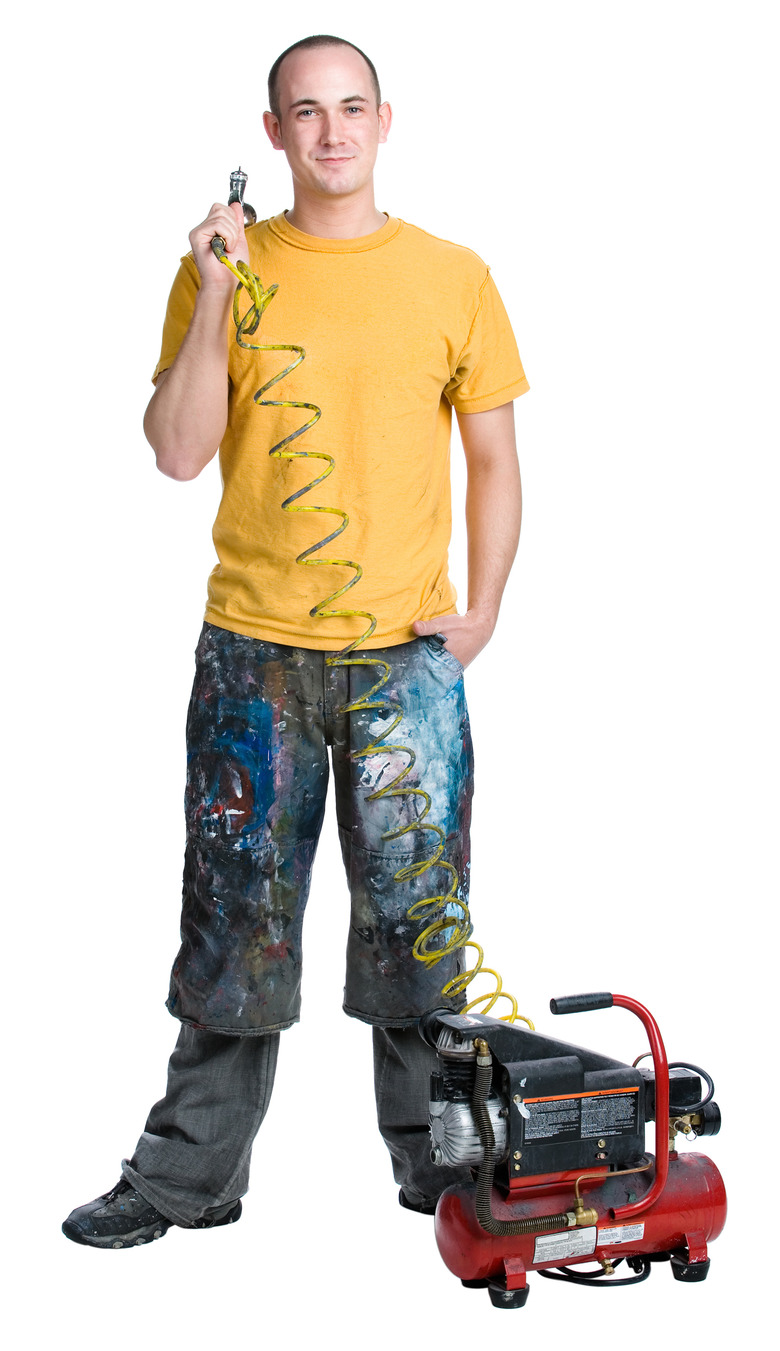How To Size And Select An Air Compressor
Your air compressor is a source of power. Whether you're a weekend hobbyist or a business owner, you need the right size of air compressor to power your air tools properly and efficiently. Selecting the right air compressor to meet your needs is simple, if you follow these steps.
Step 1
Pneumatic air tools require a volume of compressed air (expressed as cubic feet per minute, or cfm) at a specific pressure (expressed as pound-force per square inch gauge, or psig). The efficiency of a compressor is determined by its cfm and psig ratings, not necessarily its horsepower. Therefore, you can ignore the horsepower rating when sizing and selecting a compressor.
Step 2
Gather all of your pneumatic tools together. Write down the required cfm to operate each tool, as specified by the manufacturer. If you can't find this information, you can look online for a chart of standard requirements for common pneumatic tools.
Step 3
Add together the cfm requirements of all of the pneumatic tools you plan to run at the same time. Increase this number by 25% to allow for additional tools, future growth, and eventual air system leaks.
Step 4
Determine the maximum pressure (psig) needed to run the air tools. You do not need to add the psig values together like you did the cfm requirements; simply use the value of the tool that requires the greatest amount of pressure.
Step 5
Be sure the motor characteristics of the compressor are compatible: Is your electrical supply single-phase or three-phase? What is the voltage? Residential and commercial buildings usually have single-phase, 115 volt, 60-cycle power, while industrial buildings often have a three-phase power supply.
Step 6
Small compressors should be used with an air receiver, or storage tank. The receiver stores compressed air and minimizes the loaded run time of the compressor. The air receiver should be at least 5 gallons per cfm for optimal results.
Step 7
Take your cfm, maximum pressure, motor characteristics, and receiver size requirements to your local compressor dealer or home improvement center and compare features among brands. Keep the quality factor in mind; you will certainly get what you pay for with air compressors.
Tip
Most single-stage compressors have a maximum pressure rating of 135 psig. Most two-stage compressors have a maximum pressure rating of 175 psig. More horsepower does not always mean a bigger and better compressor. This is because some compressors are rated at the peak horsepower of the motor and others are rated at the running horsepower of the motor.
